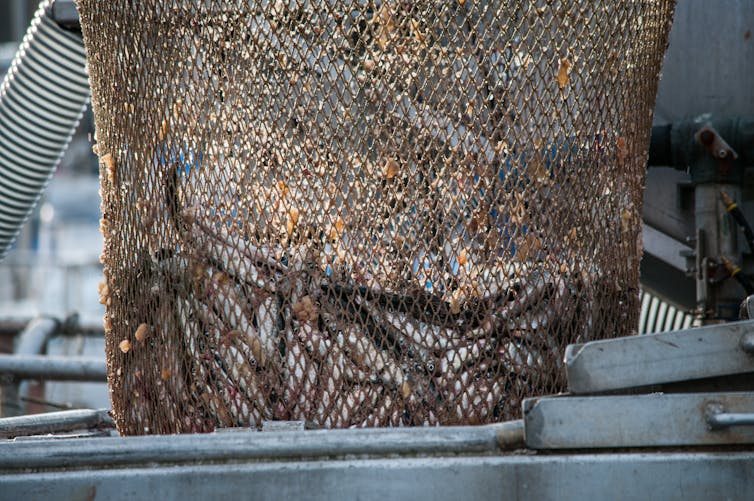Being a commercial fish harvester is tough work. There are long hours, unpredictable seas and demanding physical conditions, not to mention the experience it takes to know where to drop the traps or cast a net.
Less recognized, but critical, are the economics of it. Some expenses you might expect: vessel, fuel, gear, ice and crew salary. In some jurisdictions, including the West Coast of Canada, harvesters must purchase or lease commercial licences that grant the right to participate in different fisheries, and quota that grant the right to catch a portion of a particular fish stock.
In the West Coast fisheries, a single licence may be exchanged for tens of thousands of dollars to hundreds of thousands of dollars, and quota transactions are worth tens of millions of dollars annually. However, the market for licences and quota is not transparent or tightly regulated. Not unlike Vancouver housing, speculative investors see opportunity and can snap up licences and quota.
As licences and quota concentrate in fewer hands they become out of reach for active harvesters. In turn, the socioeconomic fabric of Indigenous and coastal communities stretches and strains. A recent study by the Parliamentary Standing Committee on Fisheries and Oceans comes to similar conclusions.
Access for sale
Over the past year, I have been leading research into the history and distribution of West Coast licences and quota. One objective is to understand who holds what and how much. The answers are hard to come by.
Fisheries and Oceans Canada (DFO) manages the country’s commercial fisheries. Like many other agencies globally, it has transitioned to a “limited-entry approach,” where the number of licences is capped, and the year’s total allowable catch is divided up as “quota” and allocated to licences. For example, there were 343 West Coast halibut licences and 6.13 million pounds of halibut quota in 2016.
Governments often favour the limited-entry approach because it institutionalizes their control over who can access fisheries. DFO knows how many eligible licences and vessels there are and, based on stock assessment science, determines the year’s total allowable catch.
A common, though not universal, element of limited-entry fisheries is to make licences and quota freely tradeable. This is the case on the West Coast.
If you wanted to enter into the halibut fishery you would need to negotiate a deal with an existing holder. DFO records the official purchase and lease transactions but does not publicly report them. It does not track informal loans, co-ownership or other financing arrangements that some harvesters enter into to acquire licences and quota.
Understanding the market
Cautions about the transparency, fairness and effectiveness of the market for West Coast licences and quota have been circulating for at least 15 years. Recent reports and research on the B.C. salmon and herring fisheries indicate that a small number of holders control a disproportionate number of licences and quota.

This raises a number of issues, but two patterns are especially important.
First, fish processing firms are free to accumulate licences and quota. B.C.’s largest fish processor, Canfisco, and its parent company, Jim Pattison Enterprises, control hundreds of licences and large volumes of quota across numerous fisheries.
Sometimes processors hire harvesters to run company-owned vessels. More often, they lease licences and quota to harvesters who run their own vessels and sell back the catch. This practice helps processors secure supply and some harvesters welcome working with them in this way. Other harvesters discuss being vulnerable to uncertainty and price squeezing because the lease rates are not made public and fish prices fluctuate within and between seasons.
Second, one need not be in the fishing industry to hold West Coast licences and quota. This opens the door to speculative investing, though exactly how much is unclear.
The records DFO makes public list individual and company names, First Nations and many “numbered companies.” Without submitting an access to information request on each numbered company it is impossible to know who is behind them, where their investment funds originate and how licence and quota holdings factor into their business practices. It is not unheard of for fisheries agencies to track ownership and corporate details, but DFO does not appear to do so.
Transparency, equitability and control
In a recent report, the Standing Committee on Fisheries and Oceans made 20 recommendations to improve the transparency and equitability of B.C.’s fisheries and to better regulate who controls licences and quota.
For example, the committee suggests there should be no future sales of licences or quota to non-domestic interests and that DFO should publish a database listing licence and quota holders and transactions. It also recommends that the fisheries minister establish an independent commission to study “made-in-B.C. solutions,” including a system that would equitably share the value of harvested fish between the quota and licence holder, processor and harvester.
Regulations in other jurisdictions also provide guidance. In Atlantic Canada, for example, owner-operator policy states that only vessel owners in the inshore fleet can hold inshore licences, that they must be aboard during fishing and that controlling agreements — where harvesters finance licences through arrangements with processors or other private interests — are prohibited.
West Coast harvesters and coastal communities themselves have many ideas, and several nonprofits support local initiatives. Two examples include community licence and quota banks that hold licences and quota and lease them to local harvesters for a fair rate, and affordable vessel equipment that harvesters can use to meet DFO’s on-board monitoring requirements without breaking the bank.
A policy that mandates transparency, incorporates owner-operator principles and includes appropriate market regulation, combined with innovation in Indigenous and coastal communities, might just lead to a more socially sustainable fishing sector on the West Coast.

